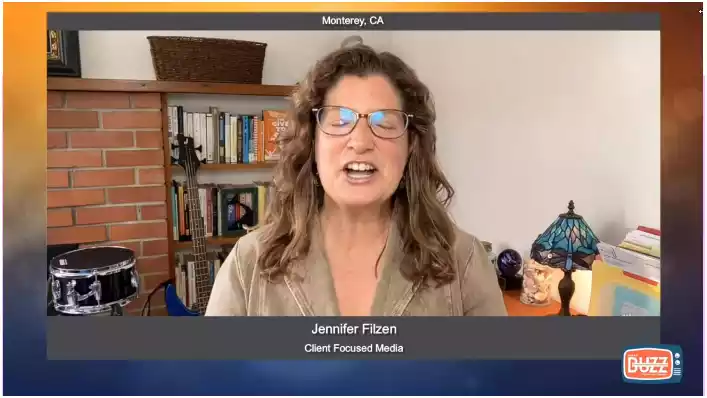Optimizing Healthcare: Strategic Prior Authorization for Better Operations
Explore how strategic prior authorization for better operations, boost efficiency, and cut costs. Learn the key strategies that can transform your practice. Read more to find out!

The healthcare sector is evolving rapidly to improve efficiency and patient care. A significant component of this progress is prior authorization in healthcare. This process involves obtaining approval from an insurance provider before certain treatments, procedures, or medications are administered. Prior authorization ensures that the proposed care is medically necessary and covered under the patient’s insurance plan, preventing unexpected costs and delays. Understanding this process is crucial for healthcare providers and patients to navigate the system effectively.
Let’s explore!
Table of Contents
Strategic Prior Authorization for Better Operations

Understanding Prior Authorization
Health insurance companies use prior authorization to confirm the necessity and adherence to guidelines for healthcare services, treatments, or medications. This process involves a review process in which providers must get approval from insurers before delivering the service. It aims to manage costs, prevent treatments, and support evidence-based medicine.
The Significance of Strategic Prior Authorization Plans
Strategic prior authorization plans are crucial for balancing cost control and offering quality care. By implementing these plans, healthcare organizations can achieve goals:
- Cost Management: Prior authorization helps in reducing unnecessary expenses by ensuring that only medically necessary procedures and treatments are approved. This, in turn, helps in controlling healthcare costs for both providers and patients.
- Quality Assurance: These plans ensure that patients receive appropriate and evidence-based treatments, thus improving the overall quality of care.
- Utilization Control: By requiring approval for specific services, prior authorization helps in preventing overutilization and misuse of healthcare resources.
- Compliance and Regulation: Prior authorization plans help healthcare providers comply with insurance policies and regulatory requirements, reducing the risk of fraud and abuse.
Obstacles in Implementing Preapproval Strategies
While there are advantages, introducing preapproval protocols presents a set of obstacles:
- Complex Administrative Procedures: Securing preapproval can be intricate and time-consuming, involving documentation and interaction between providers and insurers.
- Treatment Delays: Lengthy approval procedures may cause delays in treatment, potentially affecting outcomes and satisfaction.
- Provider Discontent: Healthcare providers often voice frustration with the workload—a perceived lack of independence linked to preapproval mandates.
- Patient Uncertainty: Patients may feel bewildered or frustrated by the process, especially when faced with delays or denials. This can result in dissatisfaction and decreased trust in the healthcare system.
- Differences in Requirements: Various insurers may have approval criteria, making it difficult for providers to navigate the process efficiently.
Effective Strategies for Successful Pre-Authorization
To address these challenges effectively and enhance healthcare efficiency through pre-authorization, several recommended strategies can be put into practice:
- Simplifying Processes: Making the preapproval process more straightforward and standardized can reduce burdens. Accelerate approval timelines. Technology like authorization (ePA) systems can make the authorization process more efficient and accurate.
- Technology Integration: Leveraging technology, such as electronic prior authorization (ePA) systems, can enhance efficiency and accuracy in the authorization process.
- Educating Providers and Patients: Providing clear and comprehensive information about prior authorization requirements to both providers and patients can reduce confusion and improve compliance.
- Collaborative Efforts: Encouraging collaboration and communication between healthcare providers and insurers can lead to more effective and timely authorizations.
- Monitoring and Feedback: Regularly monitoring the prior authorization process and seeking feedback from providers and patients can help identify areas for improvement and ensure continuous optimization.
Promoting collaboration and open communication between healthcare providers and insurers can result in more successful authorizations. Monitoring the authorization process regularly and gathering feedback from providers and patients is crucial for identifying areas for enhancement and ensuring continual improvement.
I'm very thankful for Portiva who I know is looking after my practice while I'm gone the virtual assistants can manage prescription refills, documents they can triage patients and just kind of answer administrative questions and they can handle a lot on their own. But also, they're very good about contacting me if there's any emergency or anything I need to attend to. So I'm very thankful for Portiva they can help almost any provider almost anywhere and it really allows for some good work-life balance as I'm getting to experience right now at my family farm so I'm very thankful for Portiva and I'm very happy to use their services"

Board Certified Family Medicine Physician

Portiva's Virtual Medical Assistant - I have all the support I need. There's somebody checking my email, any patient messages. Patients are still able to schedule and handle any scheduling issues and any kind of billing that needs to still go through. Portiva hands handles it all for me. I have support i have somebody that I can access 24/7 pretty much. It's all very seamless. If somebody has an emergency or needs a medication called in. I know that the va's at portiva will handle that for me.

Board Certified Family Medicine Physician

Real-life Examples of Prior Authorization Strategies

A large healthcare organization introduced a prior authorization (ePA) system to streamline the authorization process. By integrating this system with their health record (EHR) system, they automated documentation submission and improved communication with insurers. The outcome was decreased approval times, reduced provider workload, and increased patient satisfaction.
Example 2: Collaborative Care Approach
In another instance, a healthcare provider collaborated with an insurer to create an authorization plan targeting high-cost services. Their partnership established approval guidelines, leading to unnecessary denials and delays.
The collaborative effort increased efficiency, cost-effectiveness, and positive patient outcomes. In Case Study 3, Provider Education Initiative, a hospital system introduced a program to educate providers on authorization requirements and effective strategies. They empowered providers to navigate the authorization process by offering training sessions and resources. This initiative led to denials, quicker approvals, and higher provider satisfaction.
In conclusion
Optimizing healthcare operations through planned authorization strategies is crucial for controlling costs, ensuring quality care, and utilizing resources effectively. By acknowledging the significance of authorization, understanding its advantages and challenges, and implementing practices, healthcare organizations can improve patient outcomes, reduce administrative complexities, and promote better collaboration between providers and insurers. As the healthcare landscape evolves continuously, adopting authorization plans will be vital in maintaining the sustainability and effectiveness of healthcare delivery systems.
To learn more about prescription approval process that can enhance your medical practice. Discover more about Portiva and unlock a world of possibilities by visiting our homepage today!
- Prior authorization policies
- Prior authorization for medical treatments
- Economic trade-offs of prior authorization policies
- Navigating the prior authorization process as a patient
- Simplifying the prior authorization process
- Precertification technology and patient satisfaction
- Protecting patients with prior authorization technology
- Mitigating risks in prior authorization procedures
- Prior authorization with custom solutions
- Simplified prior authorization assistance
- Methods of risk management for prior authorization
- Why quality assurance is essential for effective prior authorization processes
- Ensuring excellence in prior authorization
- Preauthorization technology for office managers
- Prior authorization for efficient healthcare delivery
- Tailored approaches for streamlining prior authorization in healthcare
- Prior authorization process for optimal patient care
- Prior authorization support in patient care management
- Assessing the economic consequences of prior authorization


